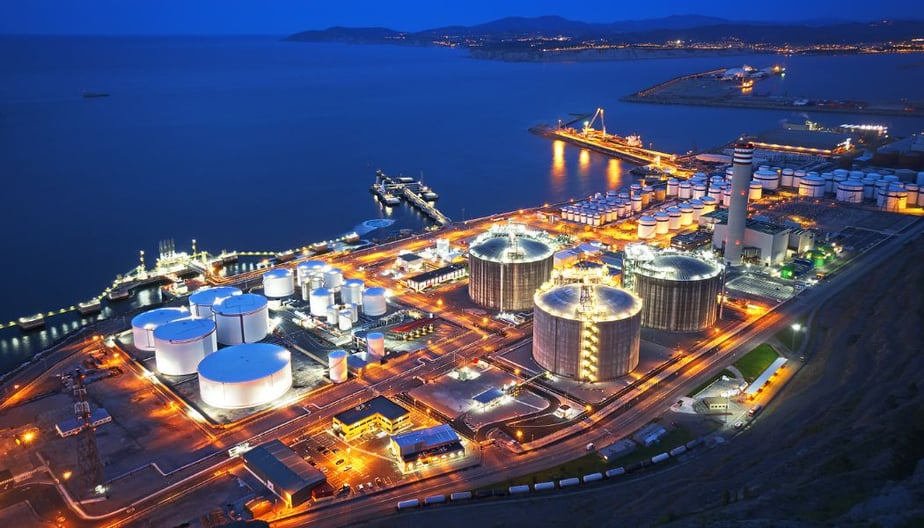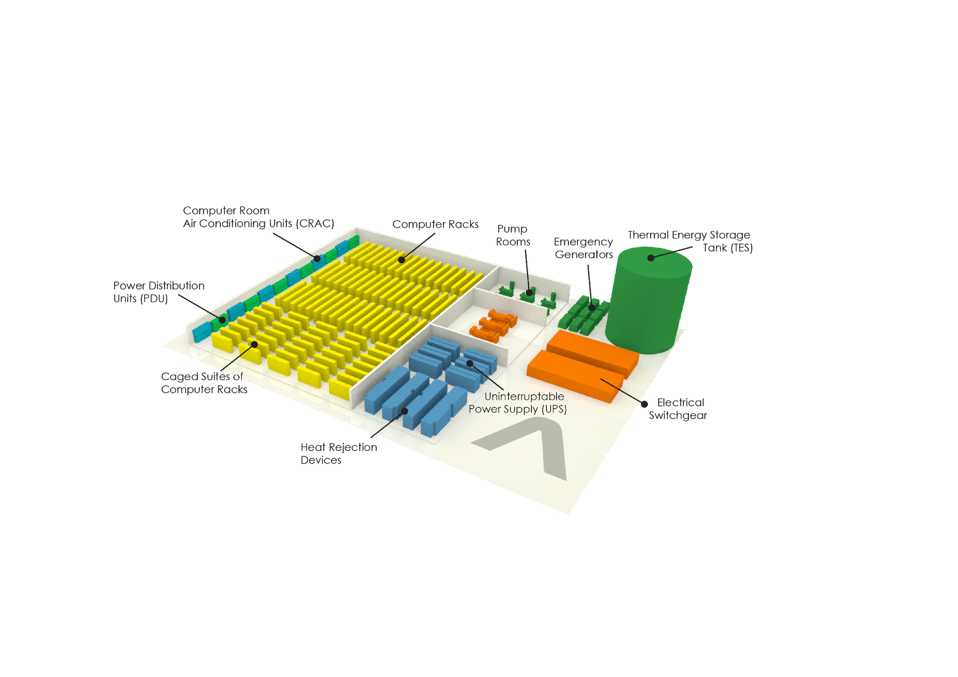The uses of thermal energy have been increasing in number and importance as modern society puts a growing weight on finding reliable and sustainable sources of power.
Today, the importance of thermal energy systems cannot be underestimated, as they play a key role in one of the leading efforts to generate heating and cooling: district heating/cooling plants. It’s precisely in this context where the concept of thermal energy storage becomes crucial, providing an option for backup power during peak hours or use increases.
The fact that thermal energy storage is inextricably linked to being able to harness the many different uses of thermal energy has translated into a steady growth of this technologies’ market value. In fact, the research firm Lux Research predicts the market value of energy storage systems to reach $50 billion within the next five years.
But what exactly is thermal energy storage and how is it enabling the expansion in the uses of thermal energy? From our perspective as experts in pioneering thermal energy solutions, at ARANER we provide a brief ‘beginners’ guide on the uses of thermal energy. Keep reading to find out.
What is thermal energy storage?
Thermal energy storage is a term that comprises all technologies aimed at accumulating and safely storing thermal energy like district cooling, heating and power plants. These technologies are then concretized in the shape of the TES tank, a naturally-stratified thermal accumulator in charge of making the energy storage a reality.
In order to do so, the TES tank stores both chilled and warm water through a naturally stratified technology. Excess production during off-peak times can be stored in the tank and then employed when needed. This typically coincides with peak demand periods, when demand is higher than chiller production capacities.
A number of uses of thermal energy are already benefiting from thermal energy storage:
- District cooling and heating solutions for large buildings and city projects
- Large-scale applications for electrical energy generation
Thermal energy storage presents important benefits to mobilize the uses of thermal energy, such as thermal energy storage in district energy, as it promotes crucial efficiencies: the TES tank allows operators to produce thermal energy at night, when ambient temperatures are lower and chillers have better performances. This energy can then be stored and used during peak demand. This translates into significant cost-effectiveness and environmental advantages, as well as the possibility for operators to respond reliably to high-load demands.
Different categories of thermal energy storage
Thermal energy storage systems are divided into three types:
- Sensible heat storage structures are able to accumulate thermal energy thanks to the sensible heat, which is related to changes in temperature of a gas or liquid with no change in phase. This category includes structures such as hot water tanks and allows one to determine the amount of stored energy by multiplying heat capacity and difference between temperatures of the medium. Adequate thermal insulation is required to guarantee sensible heat storage systems work well.
- Latent heat storage systems accumulate thermal energy thanks to the medium's latent heat which means the heat required to change phase without a change of temperature. Therefore, the charging or discharging of the tank it's related to a change of medium's phase.
- Thermochemical heat storage systems make use of the capacity of thermoreversible chemical reactions (using the heat that they release or absorb depending on whether they are exothermic or endothermic reactions, respectively.) to accumulate heat.

Thermal energy storage projects
As experts in generating pioneering thermal energy solutions, at ARANER we’ve become a key player in the development of thermal energy storage projects.
Specializing in tailor-made solutions in the fields of refrigeration, cooling and heating, we’ve been in charge of design, engineering, manufacturing & procurement of equipment and construction management in a number of successful thermal energy storage projects. Let us guide you through three examples that illustrate the state-of-the-art uses of thermal energy taking place today on a global scale:
Farah hospital
The Farah Hospital, located in Amman, has become through its decades-long longevity in one of the largest and most prestigious hospitals in the Middle East.
When the hospital projected the construction of an expansion to their facilities in the year 2012, the need for modern, efficient and sustainable structures to thermal energy was recognized as crucial. In fact, this was particularly true regarding the reduction of fuel oil consumption so that energy expenses were cut down and the building was able to qualify for a LEED Certification for Green Building.
While the standard solution for this type of building at the time would have involved the installation of diesel boilers and electrical chillers, at ARANER we went a step further.
Maximum optimizations were achieved through the implementation of two of our structures: a 1,280 TR· h Thermal Energy Storage Tank (TES) and 3,300 kW highly-efficient industrial Heat Pumps.
The case of this TES tank was particularly important, as it presented an unusual ‘L-shape’ design that required specific engineering efforts. After implementation, performance tests results were satisfactory, as the supply of chilled water remained at correct temperatures in the entire new facility complex.

Qatar Football Stadium
The Qatar Football stadium was at the heart of the 2022 World Cup. An impressive construction work that hosted a world-class sport event and millions of attendees, it needed to provide reliable cooling systems that, at the same time, provided the maximum efficiencies. In fact, this was a key illustration of the kind of demand fluctuations that TES tanks can help overcome, as the stadium experienced peak cooling demand periods (during games) followed by almost-zero cooling demand for many days.
At ARANER, we were in charge of installing a thermal storage tank that would be able to:
- Meet peak load demands even when chillers were operating at full load
- Accommodate small load variations in terms of demand without starting additional chillers
- Act as backup for chillers in case of malfunction or power outage
Our naturally-stratified 30,000 TR·h TES tank was capable of reducing operational costs for the stadium and meeting the required cooling capacity. In order to do so, chillers were run during the most efficient times, when there was no cooling demand, and then stored and preserved for peak demand times. Peak electricity demand was also reduced by 30%, as the size of the chillers was reduced.
Some key decisions in this custom-made solution included the incorporation of a large diffuser through multiphysics computational simulations and the generation of an efficient thermo-fluid design that optimized the equipment’s operation.
Al Ashghal Data Center
Data centers represent yet another example of avant-garde uses of thermal energy facilitated by ARANER, as cooling solutions lie at the heart of these structures’ reliability and cost-effectiveness. This is because data centers need cooling systems to avoid data loss, and equipment failure.

The Asset Affairs Directorate required the construction of a new office building and car park, as well as a Tier 4 Power and Mechanical Infrastructure supporting the Control Rooms and Data Centres for the Roads and Drainage department. When they approached ARANER, their need for efficient cooling through TES tank structures became apparent.
Their Tier 4 data center was built with robustness in mind, as it’s designed to host mission critical servers and computer systems, where the minimum unavailability of services is to be achieved.
A cooling plant was needed to feed the Control Room Air Conditioning (CRAC) units and several Fan Coil units. The Thermal Energy Storage (TES) system became a crucial piece of equipment providing a secondary backup for the data center in case of a main power blackout that involves generator failures and chiller malfunction.
At ARANER, we worked to re-design the thermal energy storage system and turn it into a natural stratification system that would enhance performance and cost-effectiveness.
Want to learn more about the uses of thermal energy and how thermal energy storage is pushing these solutions efficiencies and sustainability to maximum levels?
At ARANER we can help you. Download our free ebook about thermal storage technologies or get in touch with us to speak to our team about the current possibilities of thermal energy systems.










